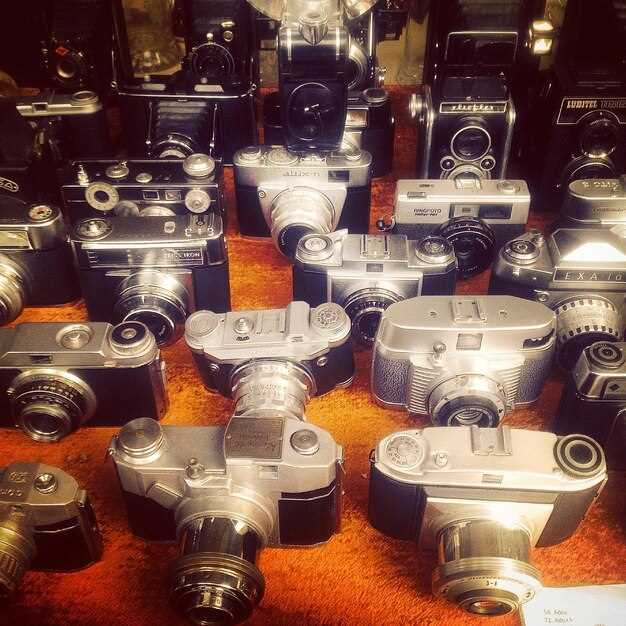Rebuilt vs New Classic Car Parts – What to Choose?

The world of classic cars offers enthusiasts the joy of restoration, but one of the crucial decisions they face is whether to invest in new or rebuilt parts. Each option presents distinct advantages and challenges that can significantly impact the overall success of a restoration project.
New parts often embody the latest technology and materials, ensuring a top-notch performance and longevity that older components may lack. They can provide the peace of mind that comes with warranties and consistency in quality. However, sourcing new parts for classic cars can sometimes be a costly endeavor, especially when considering the limited availability of certain components.
On the other hand, rebuilt parts present a viable alternative for many restorers. These components are often refurbished to meet or exceed factory specifications and can be a more budget-friendly option. Furthermore, opting for rebuilt parts can contribute to preserving the authenticity and character of a classic vehicle. However, potential drawbacks include variations in quality and durability, which can vary based on the rebuilder’s expertise.
Ultimately, the choice between rebuilt and new classic car parts boils down to individual priorities, budget constraints, and restoration goals. Understanding the implications of each option is essential for achieving a successful restoration that meets the enthusiast’s vision and expectations.
Assessing the Quality and Durability of Rebuilt Parts

When considering the use of rebuilt parts for classic cars, assessing their quality and durability is crucial. Rebuilt components are typically refurbished versions of original parts, which can provide a cost-effective solution compared to purchasing new ones. However, not all rebuilt parts offer the same level of reliability.
To evaluate the quality of rebuilt parts, it is essential to examine the refurbishing process. A reputable rebuilder will follow strict quality control procedures, ensuring that each component meets or exceeds the original specifications. Look for rebuilt parts that have been tested for performance, as this indicates a commitment to durability and reliability.
Another factor influencing durability is the materials used in the rebuilding process. High-quality materials will enhance the longevity of rebuilt components, making them a viable alternative to new parts. It is advisable to consult the rebuilder about the specifications of the materials utilized in their production.
Additionally, consider the warranty offered on rebuilt parts. A robust warranty provides peace of mind and serves as an indicator of the rebuilder’s confidence in their quality. Rebuilt parts that come with a longer warranty are often more reliable, as they have undergone thorough inspection and testing.
Lastly, gathering feedback from other classic car enthusiasts can offer valuable insight into specific rebuilt parts. Online forums and community groups are excellent resources to learn about the experiences of others, helping you make an informed choice between rebuilt and new components.
Cost Analysis: New Parts vs. Rebuilt Alternatives
When considering repairs for classic cars, a significant factor is the cost associated with new parts compared to rebuilt alternatives. New parts typically come with a higher price tag, reflecting their manufacturing process, guaranteed reliability, and extended warranty. This can be advantageous for those looking to maintain the vehicle’s value and ensure optimal performance.
On the other hand, rebuilt parts offer a cost-effective solution. These components are refurbished to meet original specifications and can provide significant savings compared to their new counterparts. However, the quality of rebuilt parts can vary greatly depending on the source of refurbishment and the attention to detail in the process. Buyers should carefully assess the reputation of the supplier and the warranty provided.
In terms of upfront costs, new parts are almost always more expensive. However, the longevity and reliability of new components can sometimes justify the investment. Rebuilt parts may require additional maintenance in the long run, which can offset the initial savings. Evaluating the total cost of ownership, including potential repairs and replacements, is essential in making a well-informed decision.
Ultimately, the choice between new and rebuilt parts will hinge on individual priorities such as budget constraints, the importance of long-term reliability, and personal value placed on originality versus cost efficiency. Each option has its merits, and understanding the financial implications is crucial for classic car enthusiasts.
Compatibility Considerations for Classic Car Restoration

When restoring a classic car, one of the primary concerns is ensuring that all parts are compatible with the original specifications. This is crucial as using the wrong components can lead to performance issues, safety hazards, and potential damage to the vehicle.
First, it’s essential to understand that not all rebuilt parts are created equal. They may vary in quality and compatibility with the specific make and model of the classic car being restored. Therefore, when selecting rebuilt parts, it’s important to verify that they adhere to the original manufacturing standards.
On the other hand, new parts often come with the advantage of improved technology and materials. However, compatibility is still a concern. New parts designed for classic cars may not always match the original specifications precisely. This can lead to fitment issues or altered vehicle dynamics.
One effective way to ensure compatibility is to consult with specialists or restoration experts who are familiar with classic cars. They can provide insights into which parts work best together and recommend both rebuilt and new options that fit your vehicle.
Lastly, always consider sourcing parts from reputable suppliers who guarantee compatibility with classic cars. Whether opting for rebuilt or new components, ensuring they are specifically designed or modified for your classic model will lead to a successful restoration.



